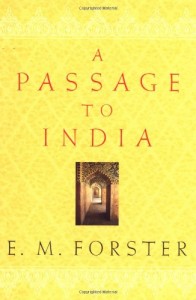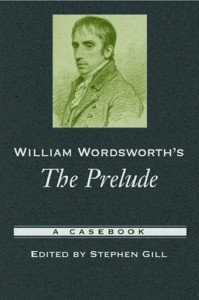Virginia Woolf: A Definitive Bloomsbury Reading List
What They Read, Who to Read, and Why
“A book is a fold of paper and thread, in itself inert, yet in the right hands, it transmits. In the mind of the reader, the hearer, the writing lives. The transference occurs, leaping from one mind to another over time and space and even death. Hence the anonymity of the authorial feat.”
That’s Virginia Woolf, talking—but it’s Virginia Woolf, a character in Norah Vincent’s new novel Adeline, and not the historical Adeline Virginia Stephen Woolf, even if that real woman might have agreed with every word. While Vincent’s character is in the midst of thinking about women writers, and continues, making a comparison between authorial transference and sex (“That is a kind of telepathy as well, achieved in the mind, between minds, and again, by means of primitive instruments”), she and the novel come back to ideas about reading, being read, writing, and much more over the course of a book that brings Virginia Woolf to life in a way no other in recent memory has.
Here on Literary Hub Vincent has written about her experience working on Adeline, and about her own crisis: “Though I did not know it then, Adeline was not just a work of fiction, or an act of literary ventriloquism. It was my suicide note. Had I succeeded in taking my life, this would have been clear.” (Please allow me to speak out of turn and say I am so grateful Vincent is here today.)
Vincent also wrote in her piece that she “lost” herself in writing about Virginia Woolf, and while I’d love to spend more time telling you about how terrific Adeline is, my task today is not as reviewer, but as gatherer. Getting lost while writing about Woolf is easy, because getting lost writing or thinking or reading about the Bloomsbury Group is easy. The Guardian wrote about this recently because a new BBC drama, Life in Squares, debuts this summer, focusing on the Stephen-Bell-Woolf-Grant drama and leading the engaged reader down familiar paths to other movies, other exhibits, that showcase what “Bloomby” E. M. Forster once deemed “the only movement English civilization has ever produced.”
A bit overwrought, Morgan? Perhaps, but grace was it then to be a member of the Bloomsbury Group, and to be a talented one was very heaven, as the cronies supported and advocated for each other in a way so open it was artless in its artfulness (no one was worrying about conflicts of interest at the Hogarth Press). Our fascination now with this early-20th-century set lies less than it ever did with their sexual hijinks and more with their influence one another’s ideas. Norah Vincent’s Adeline, while focused on one woman’s struggle to integrate her psyche with her art, reminds us through characters, works cited, and events mentioned that even if Forster exaggerated, the Bloomsbury Group truly was a movement in that it changed from within. Herewith, a book list large enough to give both newbies to Bloomsbury and old hands material for rumination.
1.
BOOKS BY THE BLOOMSBURY GROUP
Yes, I could simply give you a list of Virginia Woolf’s Greatest Hits, but that’s too easy. Instead, I’ve attempted to select something truly fine from ten of the writers (novelists, essayists, poets) who formed the innermost Bloomsbury circle.
Clive Bell, Art
A committed pacifist, Bell sat out World War I as a “conchie,” or conscientious objector. He married Vanessa Stephen (Virginia Woolf’s sister) in 1907 and wound up in the Bloomsbury Group’s white-hot center. Bell was a formalist and champion of the post-Impressionists, defending abstract art in many writings.
T. S. Eliot, Ash Wednesday
Yes, “The Waste Land” is more famous, but this, Eliot’s first long work after his conversion to Anglicanism, has an internecine feel echoing the ties between all of these group members. The poem’s dedicatee, Eliot’s wife Vivienne, was a trial to him personally and professionally, but due to his beliefs, he never divorced her.
E. M. Forster, A Passage to India
Who cares if you prefer Howards End? A Passage to India is on the TIME “All Time 100 Novels List” and the Modern Library Top 100 of the 20th Century list, so deal with it. Besides, it is the clearest expression from a Bloomsbury member of the end of the Raj and what that meant to England, to India, and to the world.
Roger Fry, Cezanne: A Study of His Development
Fry curated European paintings at the Metropolitan Museum of Art from 1904 to 1910, before he met the Bells and the Woolfs, but emerged as an integral figure to their group when he and Vanessa had an affair from 1911 to 1913. His specialty was the Italian Renaissance, but his book on Cezanne is considered definitive.
John Maynard Keynes, The General Theory of Employment, Interest, and Money
Keynesian economics changed the 20th century; if Baron Keynes of Tilton’s vision of macroeconomics is sometimes out of fashion, it’s due less to a failure of his genius than to economists’ insecurity. His General Theory came late in the group’s history, but his affair with Duncan Grant meant that he participated fully in its heyday.
Katherine Mansfield, Bliss: Short Stories
Like Maynard Keynes, Mansfield was part of LGBTQI Bloomsbury—but really, weren’t they all? The intense author hailed from New Zealand, and forged a long, close relationship with Virginia Woolf that she later repudiated, calling her peers out for “literary snobbery”—and then deriding herself as a “cursed little creature.”
Vita Sackville-West, All Passion Spent
Lady Sackville-West was concerned with the idea of women’s control over their own lives, yet she refused to call herself a feminist. Before you gasp, understand that she and her friend (and lover) Virginia Woolf considered the issues they pursued human rights and not “women’s rights.” Sackville-West’s novel is a quiet but worthy book.
Lytton Strachey, Eminent Victorians
We now know that Strachey was a veritable hothouse of erotic surprises, from his tragic affair with Dora Carrington to his proclivity for BDSM, but it is his nimble manipulation of his fellow Bloomsbury members’ psyches and his nimble gift for biography, displayed best in this four-portrait collection, that bring him to life today.
Leonard Woolf, Barbarians at the Gate
Highly educated, Leonard Woolf studied Classics at Cambridge and was a member of the Apostles before spending years in Ceylon as a civil servant. His political writings include this, a prescient view of Europe before World War II. After marrying Virginia Stephen in 1912, Woolf’s own work took a backseat to caring for her.
Virginia Woolf, To the Lighthouse
In 1925, a New York Times review of what many now consider Woolf’s masterwork said that To the Lighthouse has “particles of failure in it.” Fortunately, Louis Kronenberger added: “It is inferior to Mrs. Dalloway in the degree to which its aims are achieved; it is superior in the magnitude of the aims themselves.” Yes.
2.
BOOKS ADMIRED BY VIRGINIA WOOLF
Some of these are titles Norah Vincent’s protagonist Virginia Woolf reads in the pages of Adeline; others are titles we can verify that she read during that same time period from her letters and diaries. All of them are titles she actually admired or loved; there were plenty of works to which she gave short shrift.
Honoré de Balzac, Lost Illusions
“Read Balzac with great pleasure. Novel reading power is coming back.” So Virginia noted in her diary in 1937, after a dark period of struggle with her mental illness. She read Balzac, Stendhal, Racine, Rimbaud, Gide, de Maupassant, Colette—many more of the French pantheon than her colleagues of today ever touch.
Fyodor Dostoevsky, Crime and Punishment
Global literature wasn’t really a thing during the Bloomsbury Group’s decades, but all of its members, including Virginia Woolf, had a worldly cast of mind and frame of reference. “I read Proust, James, Dostoyevsky,” she wrote to Vita Sackville-West in 1928. She was more concerned with excellence than provenance.
James Joyce, Dubliners
She didn’t like his work—at first. She said she had bound herself to Ulysses “like a martyr to a stake, and have, thank God, now finished—my martyrdom is over…” But some years later she admitted the novel was “undeniably important,” and she always maintained an affection for his early short stories.
Edith Wharton, Memoirs
“There’s the shell of a distinguished mind,” Woolf wrote to Ethel Smyth in 1934, and after internally sniping “Takes one to know one,” the reader also thinks: Only Virginia Woolf would have the discernment and courage to put that down, and then to remark on how “I like the way she places colour in sentences…”
George Eliot, Middlemarch
“I’m reading Middlemarch with even greater pleasure than I remembered…” wrote Woolf in her diary. She adored Eliot’s great novel, calling it “one of the few English novels for grown-up people,” although in her essay on Eliot (many believe it helped resurrect Middlemarch), Woolf also noted the weakness of her colleague’s dialogue.
Marcel Proust, Remembrance of Things Past
During a bad cold in 1922, Woolf flippantly said, “Proust’s fat volume comes in very handy.” But: “My great adventure is really Proust,” she wrote to Roger Fry in the same year. “I’m only in the first volume, and there are, I suppose, faults to be found, but I am in a state of amazement; as if a miracle were being done before my eyes.”
William Wordsworth, The Prelude
“Do you know, it’s so good, so succulent, so suggestive, that I have to hoard it, as a child keeps a crumb of cake? And then people say he’s dull!” The idea alone of Virginia Woolf hoarding poetry is delicious. And she’s right about Wordsworth. The only dullness lies in forcing his lines on those not ready for their richness.
Miguel de Cervantes, Don Quixote
“He has the loose, far scattered vitality of the great books,” wrote Woolf in her diary on August 10, 1920. She mentions “vitality” as a hallmark of many of her favorite authors, considering it not simply a function of dynamic prose, but an overall quality that keeps literature relevant, something she strove for in her own work.
Sir Walter Scott, The Bride of Lammermoor
She calls him “that great man Scott,” something that may need explication for 21st-century readers used to consigning his considerable body of work to literary footnotes. Scott not only created the historical novel, he was the first bona fide rock star author, with international celebrity and a serious political career, to boot.
Leo Tolstoy, Anna Karenina
“Practically every scene in Anna Karenina is branded on me, though I’ve not read it for 15 years,” wrote Virginia to Vita Sackville-West in 1929. Given that she wrote to Vita of reading Tolstoy’s novel in 1926, her memory must have been faulty, although her esteem for his work never falters.
3.
BOOKS ABOUT THE BLOOMSBURY GROUP
Such a diverse set, from evocative literary fiction, to sad memoir, to a recipe collection. I’ve selected these books not just for writing and readability, but to show that the Bloomsbury Group truly did constitute a lifestyle—for good and ill.
The Hours, Michael Cunningham
Cunningham’s prize-winning 1998 novel manages to pay homage to Woolf as a character, an author, and a touchstone—but his even greater trick is to allow his three protagonists (Woolf, a 1949 housewife, and a 2001 New Yorker) to emerge through Woolf’s trademark Mrs. Dalloway stream-of-consciousness style.
Mrs. Woolf and the Servants, Alison Light
Virginia Woolf told the truth about messy emotions—but she was far less forthcoming about messy rooms, bodily functions, and food preparation. In her 2009 novel, Alison Light approaches Woolf’s squeamishness about the physical and her need to have the mediation of domestic help in order to write.
Vanessa and Her Sister, Priya Parmar
Released in late 2014, Parmar’s gorgeous portrait of Vanessa Stephen Bell’s attempts at individuation from her brother’s memory and her sister’s sick neediness is one of the few fictional takes on the Bloomsbury Group that places other members of the group in the center where we usually find Virginia Stephen Woolf.
Aspects of Love, David Garnett
You hear the title and think of the musical, its “Love Changes Everything” by now almost an anthem—but while Bloomsbury member Garnett might have lived by his own tune, it wasn’t particularly sweet. Present at Angelica Bell’s birth, he married her 20 years later and created a family that experienced its fair share of tragedy.
Virginia Woolf’s London: Bloomsbury and Beyond, Jean Moorcroft Wilson
Woolf had homes in Richmond, Kensington, and Bloomsbury, so a look at those buildings and their environs is a natural way to look at the author and her city. She regularly went on “street hauntings,” her phrase for a combination of people-watching while taking long walks. She thought the city caused a dissolution of self.
Bloomsbury Recalled, Quentin Bell
Bell was (unlike at least one of his siblings) his father Clive’s biological son. But psychically, he remained an observer of the goings on that began before and continued long after his 1910 arrival. On his death in 1996, Bell was a noted biographer and chronicler of the Group into which he was born.
The Bloomsbury Group: A Collection of Memoirs and Commentary, S.P. Rosenbaum (Ed.)
Given the wide swathe members of the Bloomsbury Group cut through their society, influencing literature, visual art, politics, economics, philosophy, and more, the best way to grasp their vision is by reading their words about it. S. P. Rosenbaum’s collection includes a timeline and a bibliography to help sort it all.
Deceived with Kindness: A Bloomsbury Childhood, Angelica Garnett
Even at 91, painter and writer Angelica Garnett was still grappling with her complicated upbringing as the daughter of Clive and Vanessa Bell—who was told at age 17 that her father was actually family friend and fellow Bloomsbury member Duncan Grant. This means that her husband David Garnett had once been her father’s lover.
The Bloomsbury Cookbook: Recipes for Life, Love and Art, Jan Ondaatje Rolls
He had me at “Thoby Stephen’s Monolithic Birthday Cake,” but kept me with “Meat Bobbity” and “Ye Old Cock Steak Pie,” as well as “Tipsy Chicken” and “Unusual Oysters.” The recipes guide you through the group’s heyday. This is a cookbook to savor through reading more than cooking, which is not only fine, but absolutely so.
Bloomsbury: A House of Lions, Leon Edel
While a discussion of Bloomsbury and social class is beyond the scope of this book blurb, it also seems to elude Edel in his full volume on the importance of the group’s members. He does a superb job underscoring individual contributions and group dynamic, but forgets that only the upperclass were involved—or welcome.
Feature image: The Memoir Club (1943) by Vanessa Bell.


















































